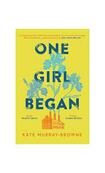
The second novel from British novelist Kate Murray-Browne, a former Faber editor, spans 111 years in the east London borough of Hackney. The narrative can be read as a history of women told through the history of one building. Those who read Murray-Browne’s 2017 debut The Upstairs Room, which was also set in east London, may expect another chilling thriller but the haunting that occurs here is a more delicate affair.
In 1909 Ellen has fallen in social standing and must adapt to working life in what is then a box factory. By 1984 it has become a squat, inhabited by 18-year-old Frances and a cohort of activists. Inevitably, the final timeline of 2020 reveals that, as with much of Hackney, the area has been gentrified and the building is now a fashionable flat where new mother Amanda feels trapped.
The novel starts strong in 1909 – the texture and tone of the era are authentically captured – and Ellen is immediately engaging as the protagonist. Fans of historical fiction will find much to revel in this timeline as Murray-Browne skilfully conjures up the past with a pulsing momentum.
If at times the more contemporary sections lack a similar confidence of pace, overall the treatment of each period is even-handed.
Children’s fiction: Five books to delight the younger reader with tales of magical cats, geese and squirrels - and a busy girl called Wanda
Filthy Queens: A History of Beer in Ireland – A quaffable and comprehensive history that leaves the reader with a thirst for more
Author Neil Gaiman dropped by US comics publisher after sexual misconduct allegations
Solving the tragic mystery of the lost boys of Skellig Michael
The examination of echoes of the past is thoughtfully executed – in terms of the history of the building but also, and most importantly, of its women occupants.
Despite the obvious differences in culture and society that impact their experiences, the heart of this novel thrums from what connects these women. The complexities of their inner lives are meticulously drawn with accuracy and attention to the perfect period detail. What this scrupulous work allows for is the credible sounding of the same existential issues to reverberate across time – eternal questions of how to move through the world as a woman with purpose and meaning.
In essence, Murray-Browne presents a spirited affirmation for the old adage – the more things change, the more they stay the same.













